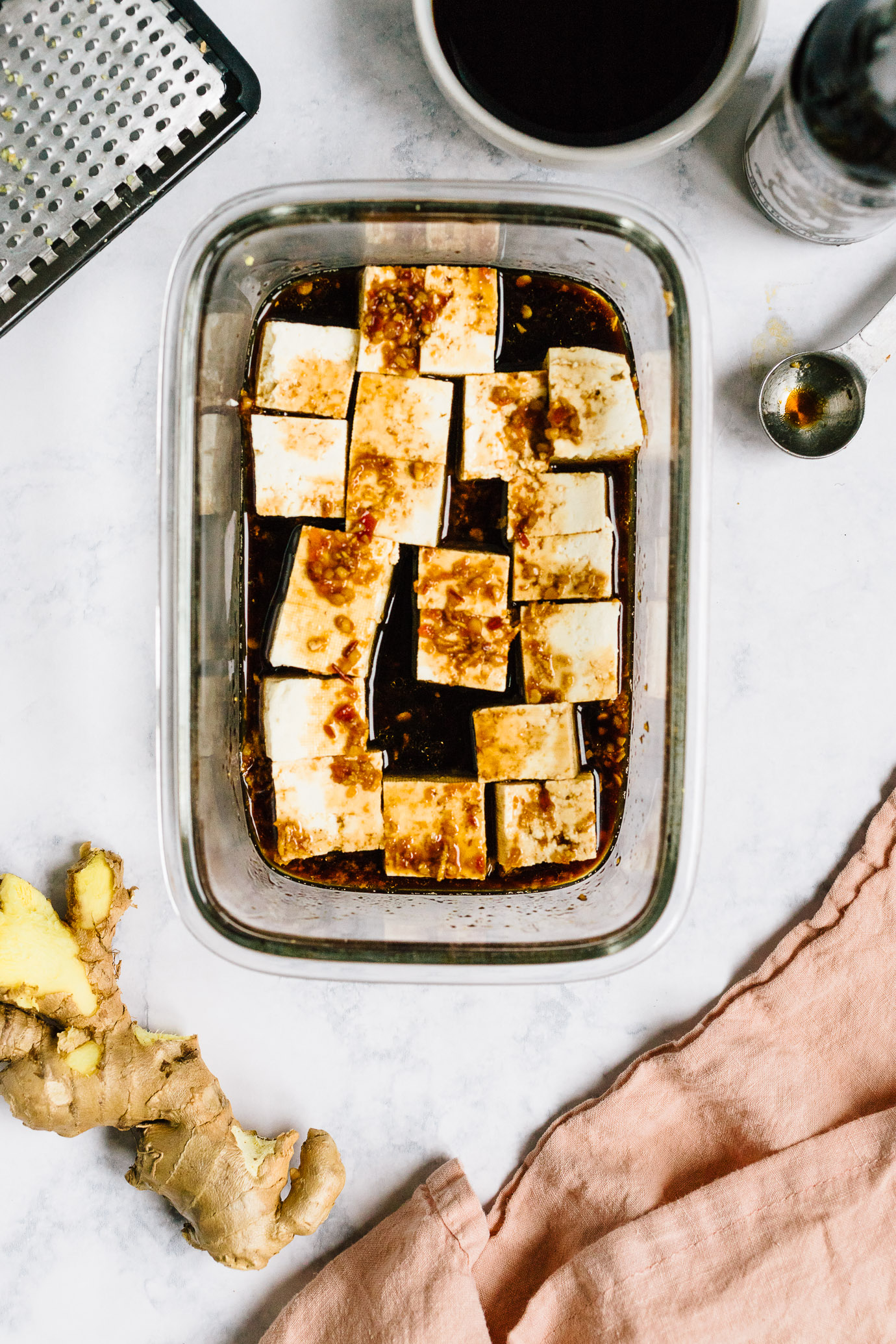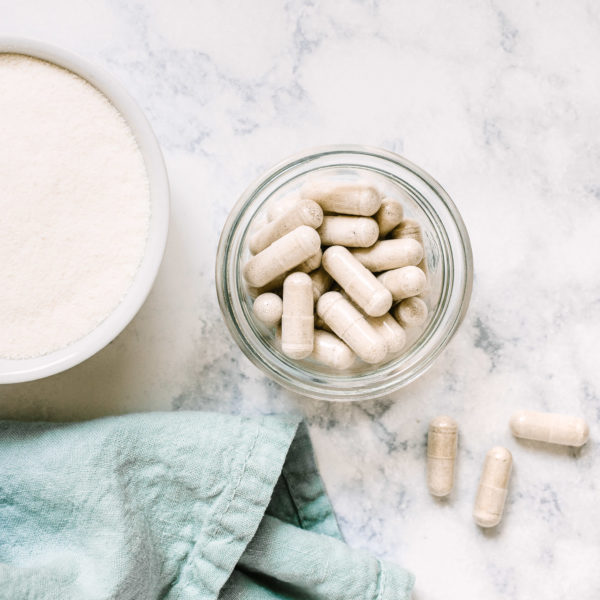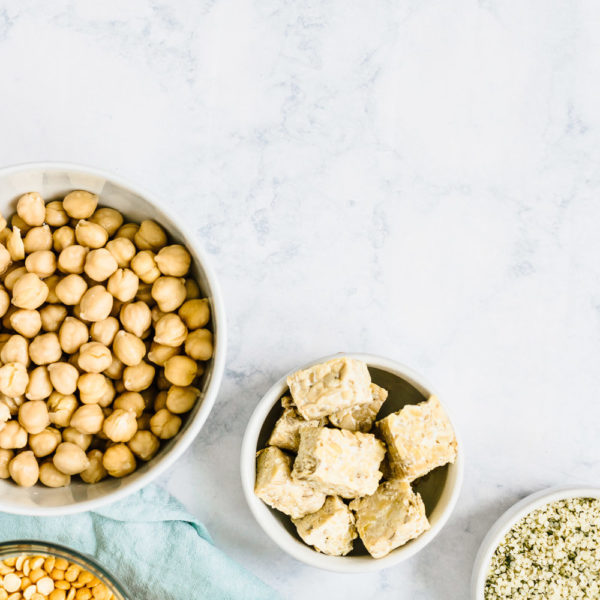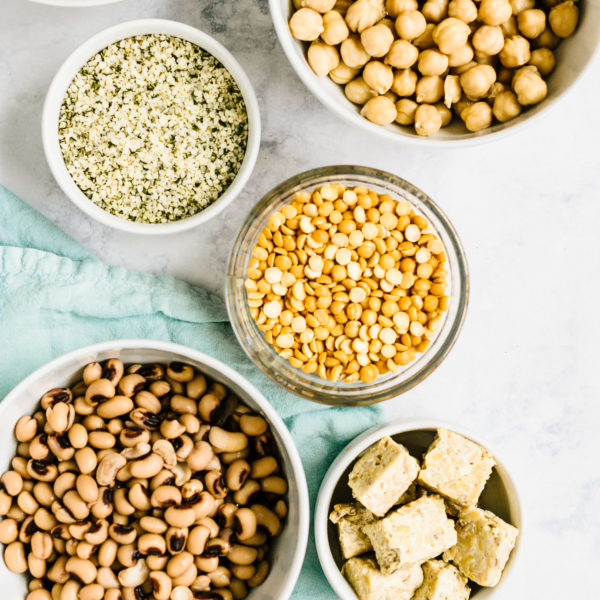This protein 101 post is part of the nutrition series that will focus on simplifying nutrition topics to help you better understand the science-based information regarding various nutrition topics, especially those regarding a plant-based diet. Since nutrition is a complex science, it can be extremely confusing. New studies are constantly being published, different diet trends and health claims continuously flood social media, and most importantly, every individual is unique. This series will highlight key information in a simple way so you can make informed choices, while also listening to you your body and ultimately how you feel. Because in the end, that all that really matters!
PROTEIN 101
Protein gets a lot of attention with media constantly talk about getting enough, especially on a plant-based diet. There is no doubt about it, protein is an extremely important nutrient, but most are getting enough protein if eating a well-balanced diet.
So why does protein gets all the hype? Every cell in your body is made up of protein. This means your muscles, hair, skin, nails (and so much more) are all made up of protein. On top of the structural importance, protein also helps us feel full, giving us a sense of satiety at a meal.
Let’s take a closer at this nutrient so you can feel confident about the choices you make while also doing what is best for your body!
WHAT IS PROTEIN?
Quick Answer: protein is a macronutrient made up of amino acids
Protein is one of the three macronutrients (carbs, fat, protein). It’s made up of 20 amino acids that bind together in different ways to create the different types of protein.
Our bodies are amazing and can make 11 of the 20 amino acids. But in order to function properly, we need to get the other 9 amino acids from protein in food. Without over complicating this topic, the 9 amino acids our bodies cannot make are categorized as essential amino acids and the additional 11 amino acids are considered non-essential because we can make them in-house.
WHAT ARE THE TYPES OF PROTEIN?
Quick Answer: protein can be categorized as complete or incomplete
Depending on what amino acids are in each protein, they can be considered complete or incomplete. Complete proteins contain all of the essential amino acids, whereas incomplete proteins do not, or contain too little of an amount to be significant.
In general, complete proteins come from an animal source with the exceptions of a few plant-based sources such as quinoa, buckwheat, soy, hemp and chia.
COMPLETE PROTEINS
-
- Animal protein: meat, fish, poultry, eggs, dairy
- Plant proteins: Soy (tofu, tempeh, soy milk, edamame), quinoa, buckwheat, hemp seeds, chia seeds
INCOMPLETE PROTEINS
-
- Plant proteins: beans, legumes, nuts, seeds, grains (oats, rice, wheat, bulgur, etc.) and to a lesser extent some veggies and fruits
It used to be thought that incomplete proteins had to be eaten together at one meal to make a complete protein – aka: complementary protein pairing.
While complementary proteins do exist, it is not necessary to eat them at the same meal to get the nutritional benefit. Eating a variety of plant-based proteins daily ensures that your body is collecting all the different proteins it needs.
WHY IS PROTEIN IMPORTANT?
Quick Answer: protein’s main role is building muscle, and maintaining and repairing all of our muscles and tissues
Protein is considered the building blocks of life because we are essentially made out of different protein. Proteins are involved in every single cell of your body support countless bodily functions. Some of these include digestion, blood clotting, immunity and hormone production (such as thyroid hormones, insulin, and estrogen). It is also the primary component of our hair, skin and nails – hello gorgeous!
Another reason protein is important is because it helps keep us full longer. Compared to carbohydrates, protein takes longer to break down. This means eating protein can help keep you satisfied, helping curb your appetite and reduce cravings.
HOW MUCH PROTEIN DO YOU NEED?
Quick Answer: at LEAST 50g per day (based on a 2,000 calories diet) but this greatly depends on the individual
The recommended amount according to the Academy of Nutrition and Dietetics in 0.8g of protein per kg of your body weight (0.36g x your weight in lbs).
To find this: lbs / 2.2 (conversion from lbs to kg) = kg x 0.8 = grams of protein
Example: 130 pounds / 2.2 = 59 kg x 0.8 = 47 grams/protein per day
However, this is based on the minimum protein intake a sedentary individual needs to function, not thrive.
Another way to look at protein needs is by looking at percentages of carbs, fat and protein. The range for protein is set at 10-30% of total calories. The recommended 0.8g of protein per kg puts protein intake at only 10% of total calorie intake – which is on the low end.
Since protein plays such an important role in how our body functions I recommend a minimum protein intake of at least 1.0g per kg. This especially holds true for vegetarian and vegan diets since protein from plant-based foods aren’t as available to the body as those found in animal sources.
However, depending on your activity level, lifestyle, goals, digestion, etc. this may still be too little. For example, if you are an athlete, vegetarian/vegan, pregnant, breastfeeding your protein requirements will be greater.
Making a conscious effort to include protein at each of your meals. This is especially if eating a plant-based diet. If you’re feeling sluggish, constantly hungry, or can’t seem to control your cravings, there’s a good chance you may need to up your protein intake. If you really want to find out what is best for YOU and feel confident you’re getting enough protein, I’d love to work with you in 1:1 nutrition coaching.
ADDITIONAL RESOURCES:
-
- Check out the Recipe Index for protein-packed recipes
- 10 Best Sources of Plant-Based Protein
- Nutrient Calculator – USDA
- Position Paper on Vegetarian Diets – Academy of Nutrition and Dietetics:
- 10 Vegetarian Ways to Eat Your Recommended Daily Protein – The Kitchn
LET’S CONNECT!
Leave a comment below and make sure to follow me on Facebook, and Instagram where I share more nutrition and wellness topics.







[…] the benefits of protein pudding. For more detailed insights on protein requirements, visit Understanding Protein Needs, which can help you optimize your nutrition […]
[…] Protein – The majority of the protein in this bread comes from the pumpkin seeds and almonds, but the oats also contribute to the total 10g of protein per slice. This amount of protein in a slice of bread is incomparable to other traditional bread, even sprouted whole grain. For more on protein and its function, check out the Protein 101: a simple guide to understanding protein. […]
[…] If you need a little refresher on protein and how much you need, check out Protein 101: A Simple Guide to Understanding Protein. […]
Please make more articles like this – nutrition101It certainly is confusing – I would love to see some examples of what a complete healthy diet looks like and substitutions in case I don’t like certain foods. And how to adapt to foods that I don’t like. I also plan to start my own blog. So feel free to chat me up any time!
thanks! – Amanda C
Hi Amanda! I really appreciate you taking the time to give me feedback!! I have a project in the works that I’m hoping will address all of that. In regards to starting your own blog, do it! If you’re passionate about anything you’ll find it’s a space for your creativity to flow. Never hesitate to email me if you have any question :)
I have been examinating out many of your articles and it’s pretty clever stuff.
I will definitely bookmark your website.
Thank you Max! I’m so happy you found my site and are going to follow along.